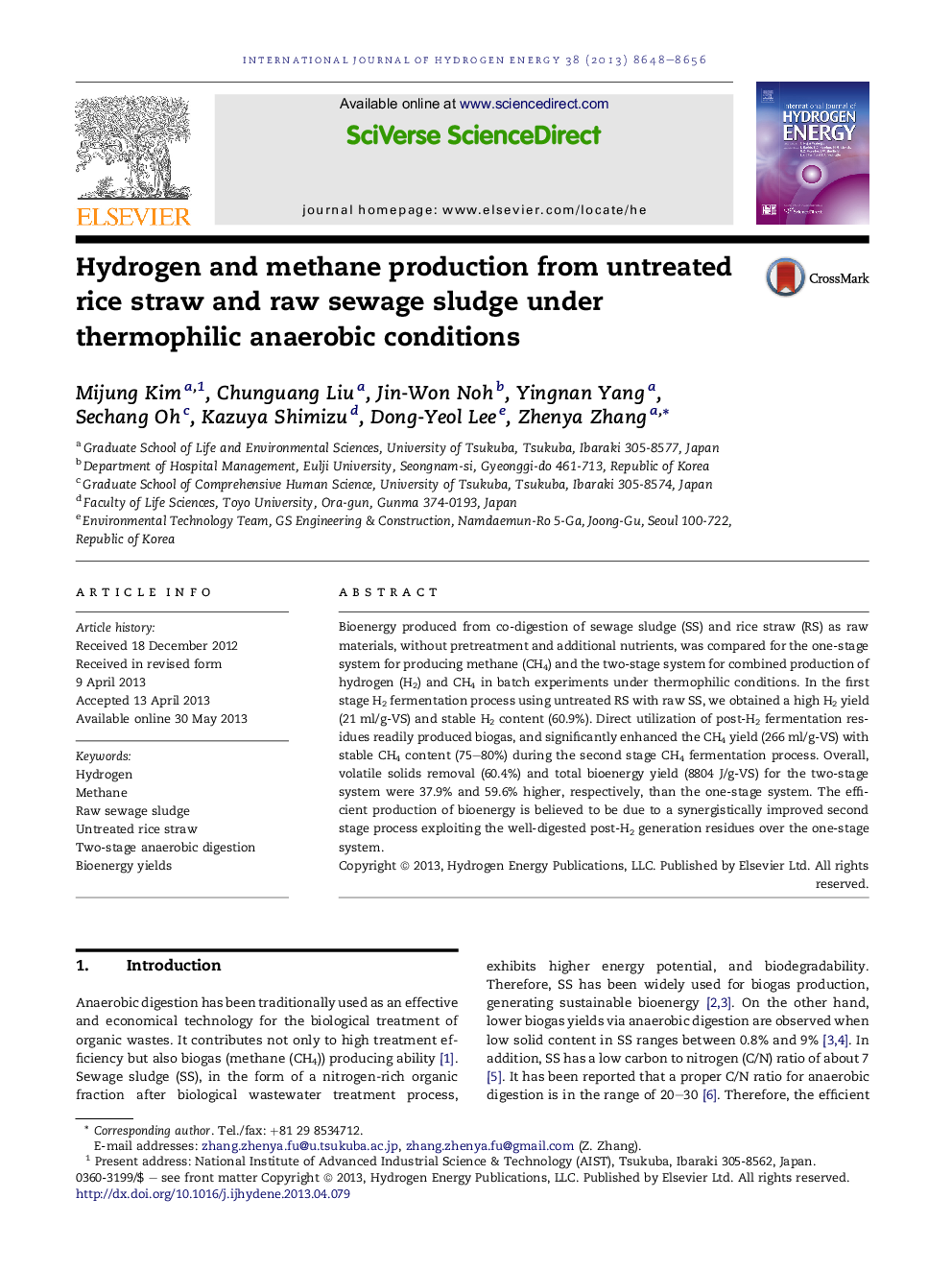| Article ID | Journal | Published Year | Pages | File Type |
|---|---|---|---|---|
| 7722428 | International Journal of Hydrogen Energy | 2013 | 9 Pages |
Abstract
Bioenergy produced from co-digestion of sewage sludge (SS) and rice straw (RS) as raw materials, without pretreatment and additional nutrients, was compared for the one-stage system for producing methane (CH4) and the two-stage system for combined production of hydrogen (H2) and CH4 in batch experiments under thermophilic conditions. In the first stage H2 fermentation process using untreated RS with raw SS, we obtained a high H2 yield (21Â ml/g-VS) and stable H2 content (60.9%). Direct utilization of post-H2 fermentation residues readily produced biogas, and significantly enhanced the CH4 yield (266Â ml/g-VS) with stable CH4 content (75-80%) during the second stage CH4 fermentation process. Overall, volatile solids removal (60.4%) and total bioenergy yield (8804Â J/g-VS) for the two-stage system were 37.9% and 59.6% higher, respectively, than the one-stage system. The efficient production of bioenergy is believed to be due to a synergistically improved second stage process exploiting the well-digested post-H2 generation residues over the one-stage system.
Related Topics
Physical Sciences and Engineering
Chemistry
Electrochemistry
Authors
Mijung Kim, Chunguang Liu, Jin-Won Noh, Yingnan Yang, Sechang Oh, Kazuya Shimizu, Dong-Yeol Lee, Zhenya Zhang,
